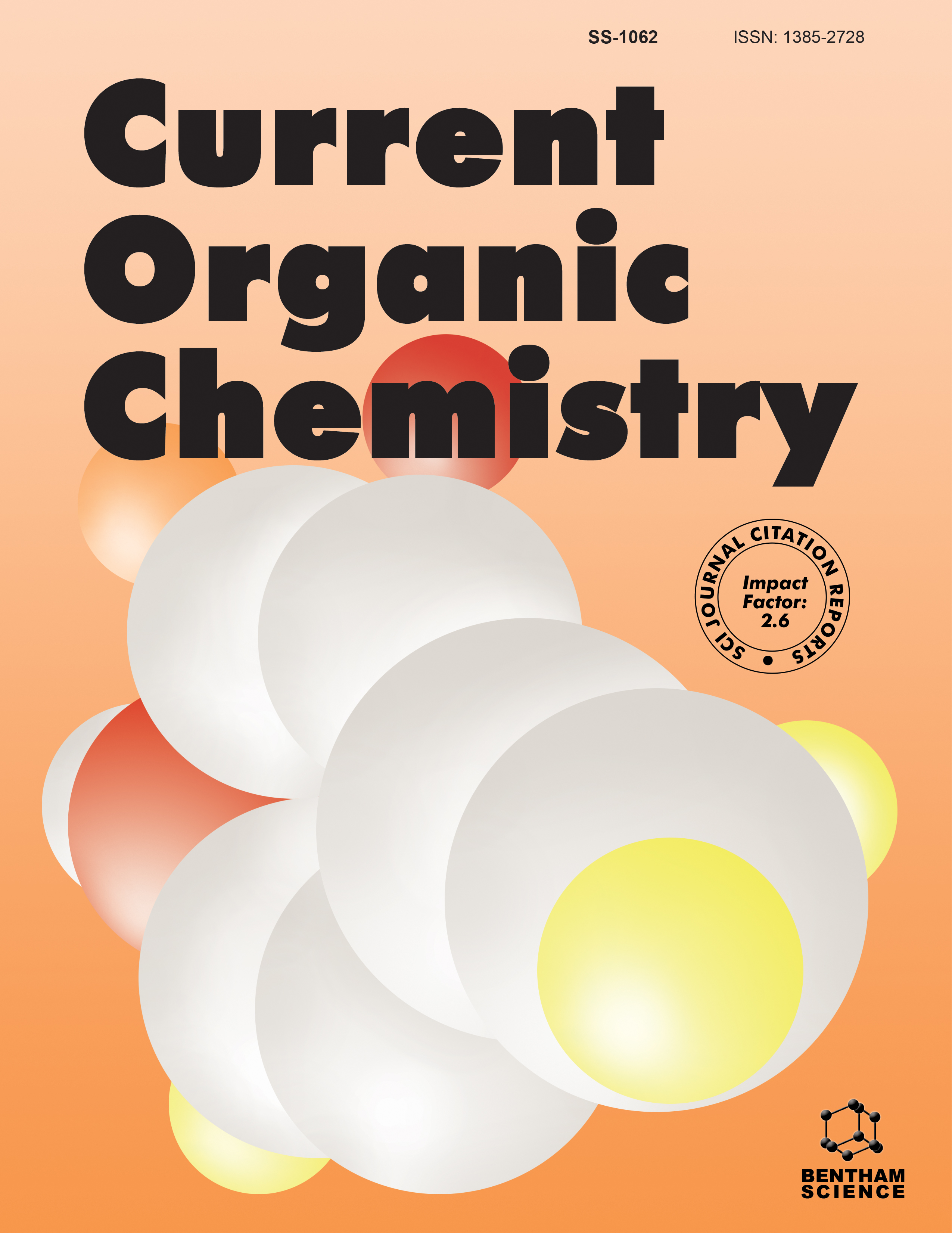- Home
- A-Z Publications
- Current Organic Chemistry
- Previous Issues
- Volume 19, Issue 18, 2015
Current Organic Chemistry - Volume 19, Issue 18, 2015
Volume 19, Issue 18, 2015
-
-
Surface Initiated Polymerization from Graphene Oxide
More LessGraphene oxide (GO) is a unique material due to its various functional groups involving unsaturated double bonds, epoxy/hydroxyl groups on the basal planes, and carboxylic acid groups at the edges. Thus, GO exhibits uniqueness compared to other carbon related materials (such as carbon nanotubes, graphene sheets and fullerenes) due to its pronounced potential of functionality alteration. The latter feature allows GO to b Read More
-
-
-
Metallic Particle Assemblies on Graphene
More LessBy Manos GkikasDifferent approaches to obtain metallic particles on graphene are discussed in this Review article and their applications in catalysis, electrocatalysis and surface enhanced Raman spectroscopy (SERS) are highlighted. Synthetic methods for well-dispersed metallic particles (Au, Ag, Pt, Pd, TiO2 and QDs) on graphene are summarized, and comparisons are made in their utilization in a plethora of applications with pure metallic particl Read More
-
-
-
Non-covalent Interactions of Graphene with Polycyclic Aromatic Hydrocarbons
More LessIn this mini review we discuss the interactions of polyaromatic hydrocarbons (PAHs) with graphene and the experimental approaches developed so far to create novel graphene/PAH hybrids and composite systems. The utilization of these systems in electrical, biomedical and polymer-reinforcement applications is described while special emphasis is given to environmental remediation issues.
-
-
-
Non-covalent Graphene/Polymer Functional Materials
More LessAuthors: Theodosis Skaltsas, Nikos Tagmatarchis and Stergios PispasGraphene based materials are at the center of academic attention lately. Studies have shown that graphene can be successfully combined with other materials, aiming to enhance electrical, thermal or mechanical properties. Herein, a comprehensive study of the most recent advances in the field of polymer non-covalent functionalization of graphene is presented. Solid state graphene/polymer nanocomposites are classified in Read More
-
-
-
Polyelectrolyte-graphene Nanocomposites for Biosensing Applications
More LessDue to their unique structure, the optical and mechanical properties graphene and its derivatives (e.g. graphene oxide, reduced graphene oxide) have captured the attention of a constantly increasing number of scientists with regards to biomolecule sensing. This mini review focuses on one specific type of sensor, that consisting of graphene and polyelectrolytes. Polyelectrolyte-graphene nanocomposites exhibit outstanding d Read More
-
-
-
Polymer Functionalized Graphene Oxide: A Versatile Nanoplatform for Drug/Gene Delivery
More LessAuthors: George V. Theodosopoulos, Panayiotis Bilalis and Georgios SakellariouCarbon nanostructures and especially graphene oxide (GO) have attracted tremendous interest in the scientific community due to the potential utilization in numerous applications in the last decade. Herein, we describe the recent advances in the field of biotechnology and biomedicine of graphene oxide/polymer hybrids as novel nanocarriers for drug and gene delivery.
-
-
-
Recent Advances in Graphene-Based Materials for Lithium Batteries
More LessAuthors: George S. Pappas, Stefania Ferrari and Chaoying WanEnergy production and storage have become key issues due to the ever increasing demand of electricity in modern days. Rechargeable batteries are recognized as the primary power sources for applications from portable electronic devices to electric vehicles. Recently, there has been a growing interest in investigating graphene nanocomposite materials for various energy storage applications, such as electrodes in lithiu Read More
-
-
-
Graphene Nanoribbons: Towards Graphitic Materials with Predefined Dimensions and Electronic Properties
More LessIn the present review article we discuss the progress that has been thus far achieved towards producing graphene nanoribbons (GNRs) with predefined dimensions and, therefore, electronic properties, by using bottom-up approaches. Some selected, representative top-down strategies are also reviewed. GNRs are graphitic carbon-based materials having nano-scale dimensions and semiconducting or metallic electronic Read More
-
Volumes & issues
-
Volume 29 (2025)
-
Volume 28 (2024)
-
Volume 27 (2023)
-
Volume 26 (2022)
-
Volume 25 (2021)
-
Volume 24 (2020)
-
Volume 23 (2019)
-
Volume 22 (2018)
-
Volume 21 (2017)
-
Volume 20 (2016)
-
Volume 19 (2015)
-
Volume 18 (2014)
-
Volume 17 (2013)
-
Volume 16 (2012)
-
Volume 15 (2011)
-
Volume 14 (2010)
-
Volume 13 (2009)
-
Volume 12 (2008)
-
Volume 11 (2007)
-
Volume 10 (2006)
-
Volume 9 (2005)
-
Volume 8 (2004)
-
Volume 7 (2003)
-
Volume 6 (2002)
-
Volume 5 (2001)
-
Volume 4 (2000)
Most Read This Month
Article
content/journals/coc
Journal
10
5
false
en


